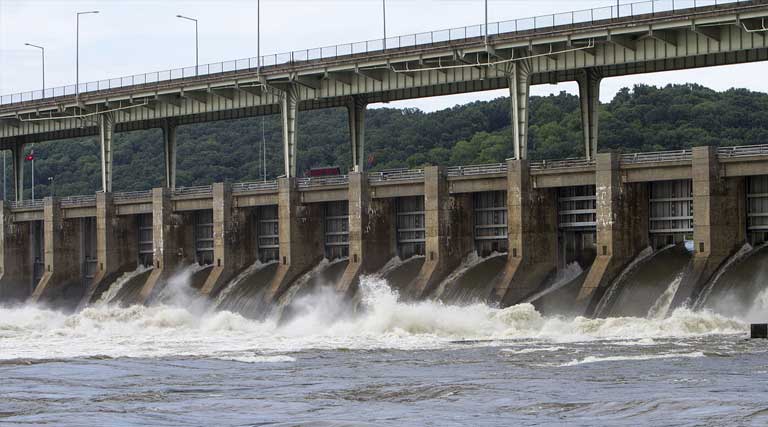Photo: Chickamauga Dam – hydroelectric dam on the Tennessee River in Chattanooga, Tennessee opened January 15, 1940.
Published: January 11, 2021
Chattanooga, TN – While cutting into the Chickamauga Dam might seem like a strange project to many Chattanoogans, it is an essential part of the maintenance work that keeps the dam up and running. Crews will make a cut that runs 107 feet into the concrete structure.
Daniel Moore, civil engineer for TVA, says incisions like this are necessary for the structural soundness of the dam. Cutting into the concrete allows it to have room to breathe and expand.
Moore said, “We’re creating a space for the concrete to grow. The whole length of the dam is continuing to grow.”
This is not the first time that crews have cut into the Chickamauga Dam. In 1997, when the dam was nearly sixty years old, the first cut was made. The second cut came in 2008. This is the third cut, and crews should have the entire thing finished sometime in February of this year.
Crews are currently on the deck of the dam, making an incision about 5/8ths of an inch wide. The concrete material of the structure is constantly expanding, due to alkali-aggregate. This phenomenon can loosen the moving parts that allow for flood control and hydroelectric generation.
There are crews of just five to six people at a time working atop the dam. Most of the work consists of crew workers following the lines left from the previous two cuts. The cut will go from the top of the dam, expanding 38 feet wide and going 107 feet deep. Once the cut is finished, the crews will seal it up.
The entire project will take around three months to complete, and there must be someone on the dam 24 hours a day, seven days a week, regardless of the weather.
However, Moore said, “We stop for lightning.”
This type of project has to be done during the winter months because the heat of the summer makes the concrete expand even more. To get the work done, crews will use a diamond wire saw and several motorized pulleys to slice through the dam.
The alkali-aggregate is a somewhat rare phenomenon and it doesn’t happen to every dam. Moore explained that in the 30s, when the material was first dug out of the quarry, the workers didn’t know it would expand.
Moore said, “It was all built before we really knew what alkali-aggregate reaction was. With newer dams, they can take precautions.”
Years after the dam was originally completed, engineers began to notice smaller air gaps and tighter clearances.
The TVA now has the resources and instruments to continuously monitor just how much the dam is expanding, so cuts can be made when necessary. According to Moore, the cut will have to be made every six to twelve years.
Moore said, “We have hundreds of instruments up here monitoring so we have an idea what the stress on the concrete is.”
The project is more complex than simply making an incision and the work must be done in three phases. Some of the work has to be performed under the waterline, so divers must go down to secure the pulleys.
Kristen Smith, senior program manager for dam safety, said, “It’s pretty specialized work we’re doing.”





